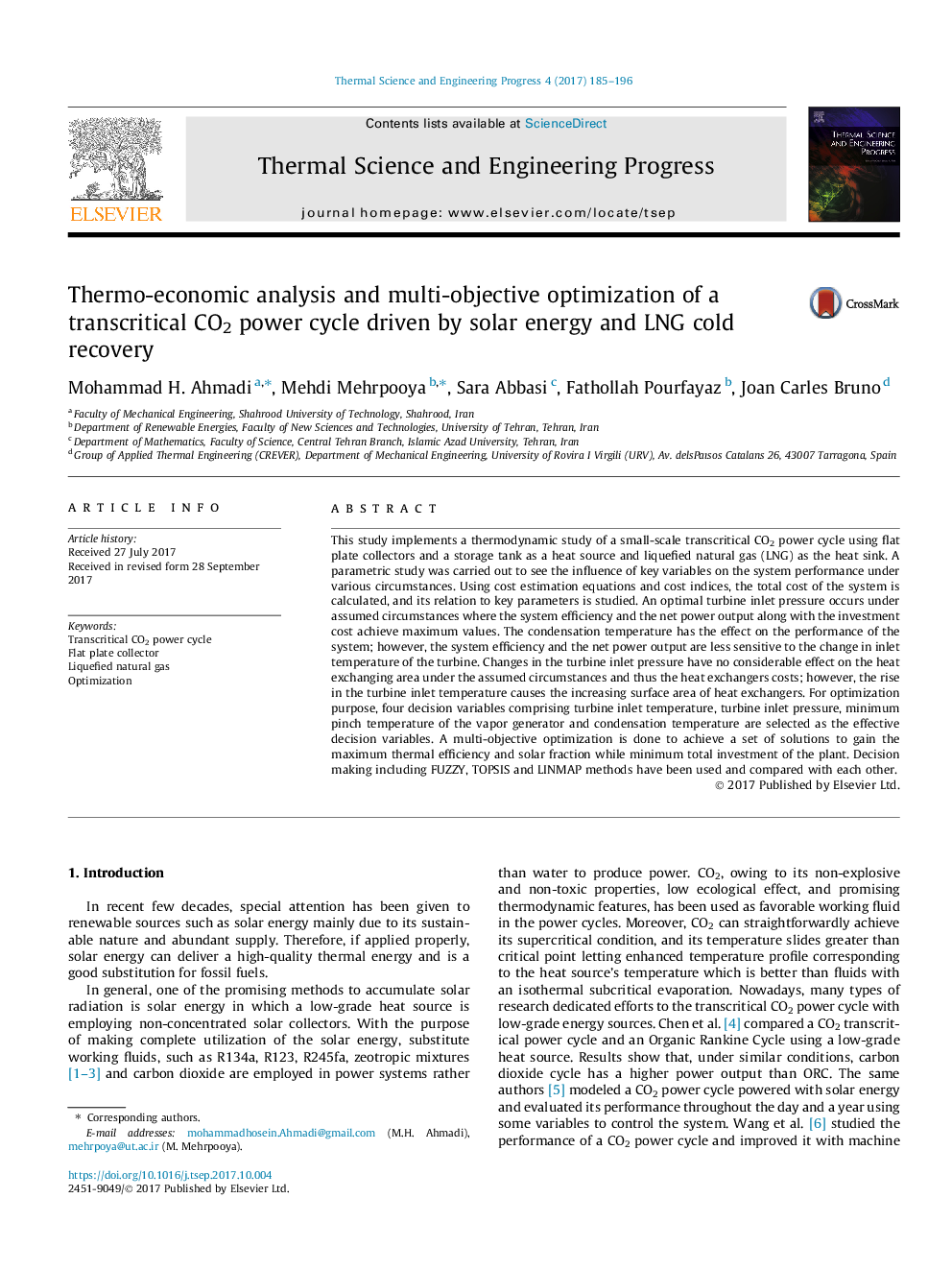| Article ID | Journal | Published Year | Pages | File Type |
|---|---|---|---|---|
| 8918853 | Thermal Science and Engineering Progress | 2017 | 12 Pages |
Abstract
This study implements a thermodynamic study of a small-scale transcritical CO2 power cycle using flat plate collectors and a storage tank as a heat source and liquefied natural gas (LNG) as the heat sink. A parametric study was carried out to see the influence of key variables on the system performance under various circumstances. Using cost estimation equations and cost indices, the total cost of the system is calculated, and its relation to key parameters is studied. An optimal turbine inlet pressure occurs under assumed circumstances where the system efficiency and the net power output along with the investment cost achieve maximum values. The condensation temperature has the effect on the performance of the system; however, the system efficiency and the net power output are less sensitive to the change in inlet temperature of the turbine. Changes in the turbine inlet pressure have no considerable effect on the heat exchanging area under the assumed circumstances and thus the heat exchangers costs; however, the rise in the turbine inlet temperature causes the increasing surface area of heat exchangers. For optimization purpose, four decision variables comprising turbine inlet temperature, turbine inlet pressure, minimum pinch temperature of the vapor generator and condensation temperature are selected as the effective decision variables. A multi-objective optimization is done to achieve a set of solutions to gain the maximum thermal efficiency and solar fraction while minimum total investment of the plant. Decision making including FUZZY, TOPSIS and LINMAP methods have been used and compared with each other.
Related Topics
Physical Sciences and Engineering
Energy
Energy Engineering and Power Technology
Authors
Mohammad H. Ahmadi, Mehdi Mehrpooya, Sara Abbasi, Fathollah Pourfayaz, Joan Carles Bruno,
